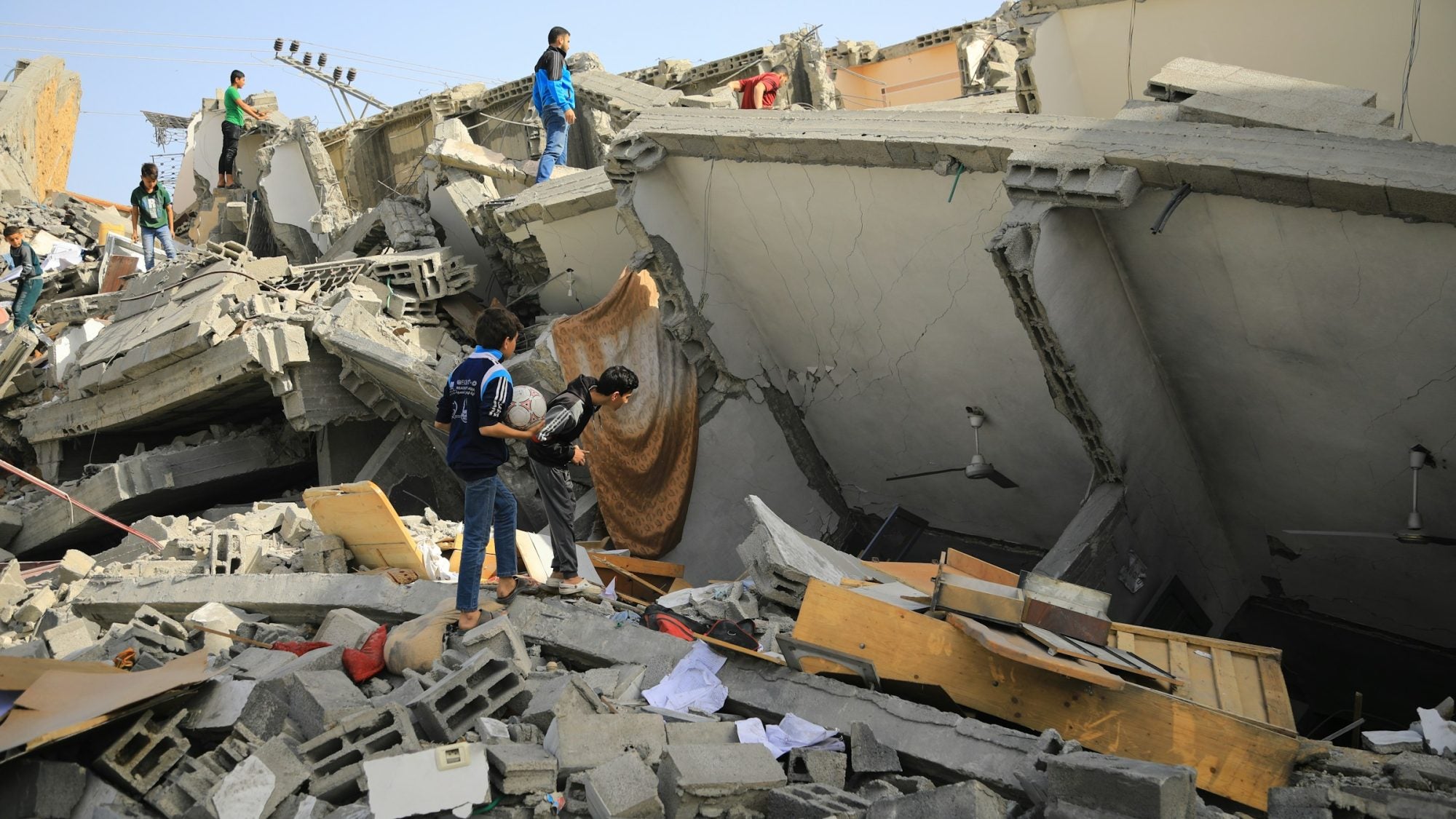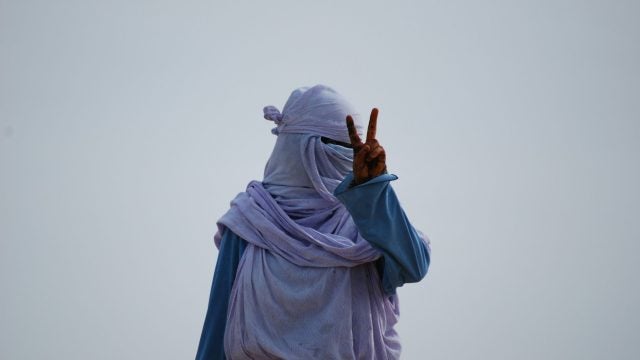
Title: Infanticide in the Name of Proportionality: Gaza as a World Order Problem
This article analyses the distortions of the International Humanitarian Law (IHL) notion of proportionality in the context of the Israel-Gaza war. It discusses Israel’s attempts to reinterpret proportionality to justify disproportionate harm to civilians, especially children, by framing them as collateral damage or human shields—a distortion that threatens to blur the line between legitimate wars and genocide. To prevent this framework from being applied to future armed conflicts, the article concludes by proposing that states codify the special protection of children in their military manuals’ provisions on proportionality.
Introduction
Since October 7th, 2023, 18,430 identified Palestinian children have been killed in Gaza, including a disconcerting number of toddlers: 937 under 12 months old, 486 under 6 months old, and many dozens killed at one or two days of age. Estimates also suggest that the Gaza Strip is home to nearly 40,000 orphans, 17,000 Wounded Child, No Surviving Family, and the world’s largest child amputee population.
The Israeli Defense Forces (IDF) and the Israeli Government do not deny that attacks have regularly killed and injured hundreds of civilians, including children. Rather, they claim that this mass harm of protected persons is lawful under the international humanitarian law (IHL) rule of proportionality. In essence, proportionality prohibits attacks on otherwise lawful military targets when the foreseeable, incidental harm to civilian lives and objects can be expected to be excessive in comparison to the anticipated military advantage. When attacks are launched with the full awareness that they will cause clearly disproportionate incidental harm to civilians, they are, by definition, war crimes.
Proportionality’s inherent requirement to weigh civilian lives against military advantage on a case-by-case basis has made it the most unclear, debated, and misunderstood rule among the laws of war. Its indeterminacy facilitates distortions that can disrupt IHL’s delicate balancing of civilian protection and the pursuit of lawful military necessities. In the jurisprudence of international criminal tribunals, however, even attacks killing nearly the same number of combatants and civilians, or patterns of several attacks killing, together, a hundred civilians, or operations destroying one village and displacing most of its population, were deemed either disproportionate, or so blatantly disproportionate as to suggest that civilians were the true targets. These civilian death tolls, which were enough to convict defendants of war crimes and crimes against humanity when they were the result of monthslong battles, in Gaza have often been the consequence of individual strikes, singularly considered, on children alone.
This article argues that the Israeli distortions of IHL proportionality to legalize unlimited child casualties violate the general rule imposing special protection of children under IHL and the 1948 Genocide Convention. By portraying an entire group as collateral damage, human shields, and ‘terrorists’ by proximity, Israel has created a template of legitimation that risks being exported globally. To prevent a future of wars on children and the proliferation of genocidal conceptions of warfare, third states must urgently update their military manuals’ proportionality prescriptions by explicitly incorporating the special protection of children.
Mass killing of children in Gaza: the certainty of disproportion as intention under war crimes law
Some of the most lethal attacks for children in 2023 were tweeted by the IDF themselves as examples of military efficiency, including those in Gaza City, Deir Balah and Jabalia which together killed 160 children. An IDF spokesperson referred to the Jabalia attack as evidence of the IDF’s efforts “to minimize” harm to civilians. Yet targeting Gaza’s ultra-densely populated refugee camps—some of which housed 35,000 people per square kilometer—with 2000-pound bombs, whose radius of lethal fragmentation is over 365 meters, could have only predictably killed thousands of civilians and children.
Israel has repeatedly asserted that they do not target civilians and that the mass civilian casualties are proportionate, lawful, collateral damage from attacks on legitimate military objectives. This narrative, already refuted by numerous and credible enquiries, does not stand legally. If an army flattens a fifteen-story tower with an aerial strike, knowing it was full of families, killing hundreds of civilians, mostly children, and claims that the strike was launched to kill a terrorist on the ground floor, it does not make the hundreds of victims an ‘unintended’ side-effect of the action. Indeed, the jurisprudence of the International Criminal Court rejects such claims: virtual certainty that the material elements of a crime will occur—clearly disproportionate harm to civilians, for example—amounts to intent. In other words, disproportionate and indiscriminate attacks are, legally speaking, intentional even if perpetrators have no specific desire to kill or injure masses of civilians as such. Assuming a stance of moral indifference toward the indubitable bloodshed that an attack will cause is sufficient for the perpetrator to be legally liable.
IHL from civilian protection to groups’ destruction framework
Conscious of the semantic sleights used to kill civilians under the pretense of legality, the International Committee of the Red Cross (ICRC) has denounced “some states” for proposing, in the last 20 years, “expedient interpretations” of IHL proportionality to justify “an increasingly expansive vision of what is permissible, and a contracted notion of what is considered prohibited.” This overstretching of proportionality to accommodate the mass killing of civilians, especially when it cannot be deemed to be ‘incidental’ to military advantages, betrays the very purpose of IHL treaties: to protect civilians. As the ICRC President affirmed in relation to Gaza, “proportionality […] must be applied in practice to achieve [its] very purpose: that preserving civilian life and health is the rule, not the exception.”
This reinterpretation of IHL has been most pronounced in the Israeli government and army’s discourses. Prominent Israeli military ethicists have long argued that the state must save a single Israeli national even at the cost of several non-national civilian lives. Only recently, however, has this argument been taken to its logical extreme. According to an IDF Lieutenant Colonel (one considered so well-trained legally as to be appointed director of the military prosecutions in the West Bank), IHL proportionality means that, when targeting senior terrorists (designated as such without trial and, more recently, by algorithms), it is “irrelevant to ask how many children were incidentally killed.”
Not only does this doctrine subvert IHL, it also relies on the dehumanization of Palestinians long voiced within the Israeli military and executive. Just as an opposition (Yesh Atid) parliamentarian publicly contended that “children in Gaza brought [their own killing] on themselves,” a Likud Member of the Knesset suggested that Palestinian newborns in Gaza besieged hospitals’ maternity wards were “born terrorists.” Above all, leaders have invoked the biblical massacre of the Amalekites (quintessential enemies of the Israelites in the Tanakh) in which no one, including “infants and sucklings,” was to be spared. By representing the Gazan population as part of terrorist infrastructure, or at least as a continuum of terrorists, accomplices, human shields, and collateral damage, official Israeli rhetoric has construed Gaza as a “world without civilians.”
Translating the “Amalek” trope in laws of war ideology and language
Official legal positions reflect this absolutist mindset. On December 3rd, 2023, the Israeli Ministry of Foreign Affairs published a document detailing the executive and the army’s official legal views on proportionality. The document declared that the military would factor the “advantage anticipated from an operation as a whole,” rather than from a specific strike, into its proportionality assessments. But when state policy frames the overall aim of a war, especially one deemed existential and all-encompassing, as the military advantage to be weighed against the expected civilian harm in each attack, virtually unlimited civilian casualties become acceptable. If military commanders, conditioned to believe “there is no innocent civilian” in Gaza, consider the survival of Israel and its population to be at stake in each attack, then hundreds of children killed in a single strike are easily considered ‘legitimate’ collateral damage. This logic, cumulatively applied to thousands of attacks, depicts the progressive destruction of a substantial part of a national group as both ‘incidental’ and ‘proportionate’ to legitimate military advantages Such destruction of a protected group thus becomes admissible as a matter of legal sub-culture and can be pursued as military policy.
By consistently alleging that Palestinian armed groups use Gaza’s entire population and specifically children as human shields, and by repeating that these groups alone should be blamed for the mass child casualties caused from IDF strikes, the Israeli government has created a new blueprint for garnering international support for wars against entire national groups. This grim breakthrough is evidenced by an elucidative comparison with the past. In 2003, an Israeli strike on an alleged Hamas leader killed fifteen civilians, including eight children. The EU, Arab states and even the Bush administration condemned the attack as “heavy-handed action not contributing to peace.” Twenty years later, these same states respond, at the highest level, to strikes killing ten times as many children with Israeli talking points about all Palestinian civilians being used as “human shields.”
Gaza and future wars: a world order models problem
Recently, six states declared before the ICJ that their reading of the Genocide Convention, in relation to Myanmar conduct against Rohingya children, was that children are a specially protected part of any group as they are crucial for its survival. According to the intervening states, therefore, acts committed against them must be assessed under lower thresholds of severity to decide whether they indicate genocidal intent under the Genocide Convention. Yet the same states have refrained from considering the same legal interpretation of the Genocide Convention relevant to Gaza and Palestinian children.
This scenario of unequal application of legal standards, under the same treaties, appears even more worrying when considering that IHL is structurally based on the principle of equality of belligerents. No matter how moral or heinous the actors, the international law regulating the conduct of hostilities is universal—all civilians, including children, are equally protected (or not) under it. Any argument on the legality of attacks on children in Gaza or Beirut is an argument on the legality of potential future attacks on children in New York or London. As the former United Nations Special Rapporteur Richard Falk put it, the Gaza infanticide is therefore a major world order models problem, an issue capable of reshaping the global dynamics of warfare and its limits in every single armed conflict around the world.
Urgent, feasible, and meaningful: amending domestic laws of war manuals on proportionality to uphold the special protection of children
The infanticide in Gaza proves that the legal bulwarks built in 1945 have fallen. They have fallen not because of autocracies, but under the guise of defending democracies. A customary international law rule, however, provides conscientious observers and actors a chance to demand justice for victims in Gaza, while also preventing similar catastrophes in future wars: the special protection of children in armed conflicts, well synthesized in Rule 135 of the ICRC study.
Inexplicably, this rule remains missing from the understanding of IHL proportionality in most military manuals around the world. Such manuals essentially treat children as adults in proportionality calculations, at least by omission.
Codifying this special protection into military manuals’ proportionality prescriptions, therefore, appears an urgent and minimum response to the current atrocities. States can turn to existing provisions for civilian lives and objects. The US Department of Defense Law of War Manual, for example, provides that, “in light of the humanitarian objectives of the law of war,” expected harm to civilian lives should “be given greater consideration than the expected damage to civilian objects” and should factor into decisions to target those objects. Similarly, “in light of the great importance of cultural property,” the Manual affords it greater protections than “ordinary property”.
No analogous provision exists in relation to children. It would suffice to add:
In light of the special protection of children in armed conflicts, their particular vulnerability, and their crucial role for the future of civilian populations, expected harm to children should be afforded greater consideration, in light of its specific gravity, than expected harm to adults.
Such a simple and feasible addition could, once and for all, establish that children’s deaths and injuries cannot be factored into proportionality assessments in the same way as harm to adults.
. . .
Luigi Daniele is Associate Professor in International Law at the University of Molise, Italy, where he recently moved after ten years as Lecturer and Senior Lecturer in Law at Nottingham Law School, Nottingham Trent University. His research focuses on international criminal law, international humanitarian law, and war crimes in the conduct of hostilities. He is author of the forthcoming (November 2025) book, “Indiscriminate and Disproportionate Attacks in International Law: Bridging the Accountability Gap,” edited by Hart Publishing.
The views expressed in this article are solely those of the author and do not necessarily reflect the views of the Georgetown Journal of International Affairs, Georgetown University, or any of their affiliates.
Image Credit: Mohammed al Bardawil, Unsplash Content License, via Unsplash.
Recommended Articles

This piece examines the UK government’s proscription of Palestine Action under the Terrorism Act, situating it within a broader trend of shrinking space for public dissent. It argues that the…

The escalating women’s rights crisis in Afghanistan demonstrates a gap in international legal protections of the rights of women and girls. The international community should fill this gap by making…

This article situates Bangladeshi and Global South feminist praxis, a process by which theory is realized into action, within broader critiques of international law by Third World Approaches to International…